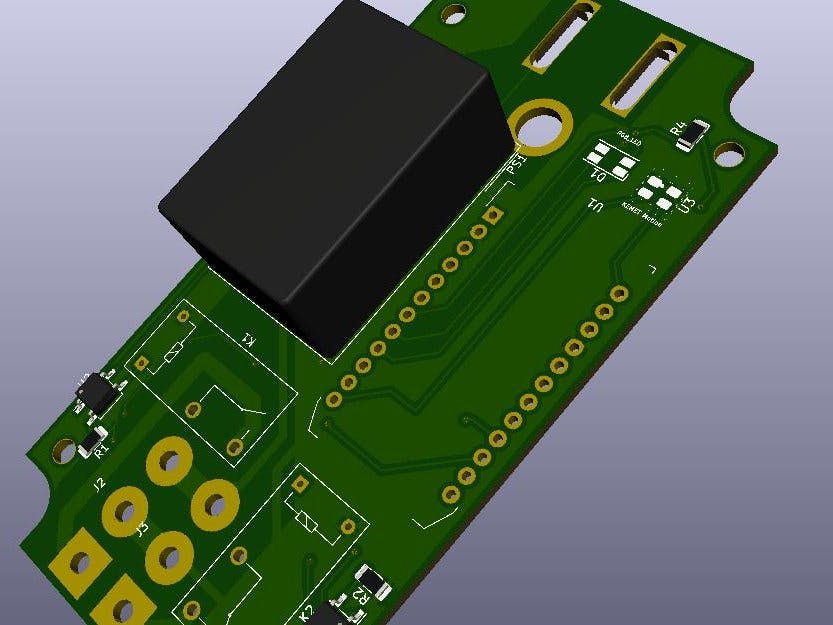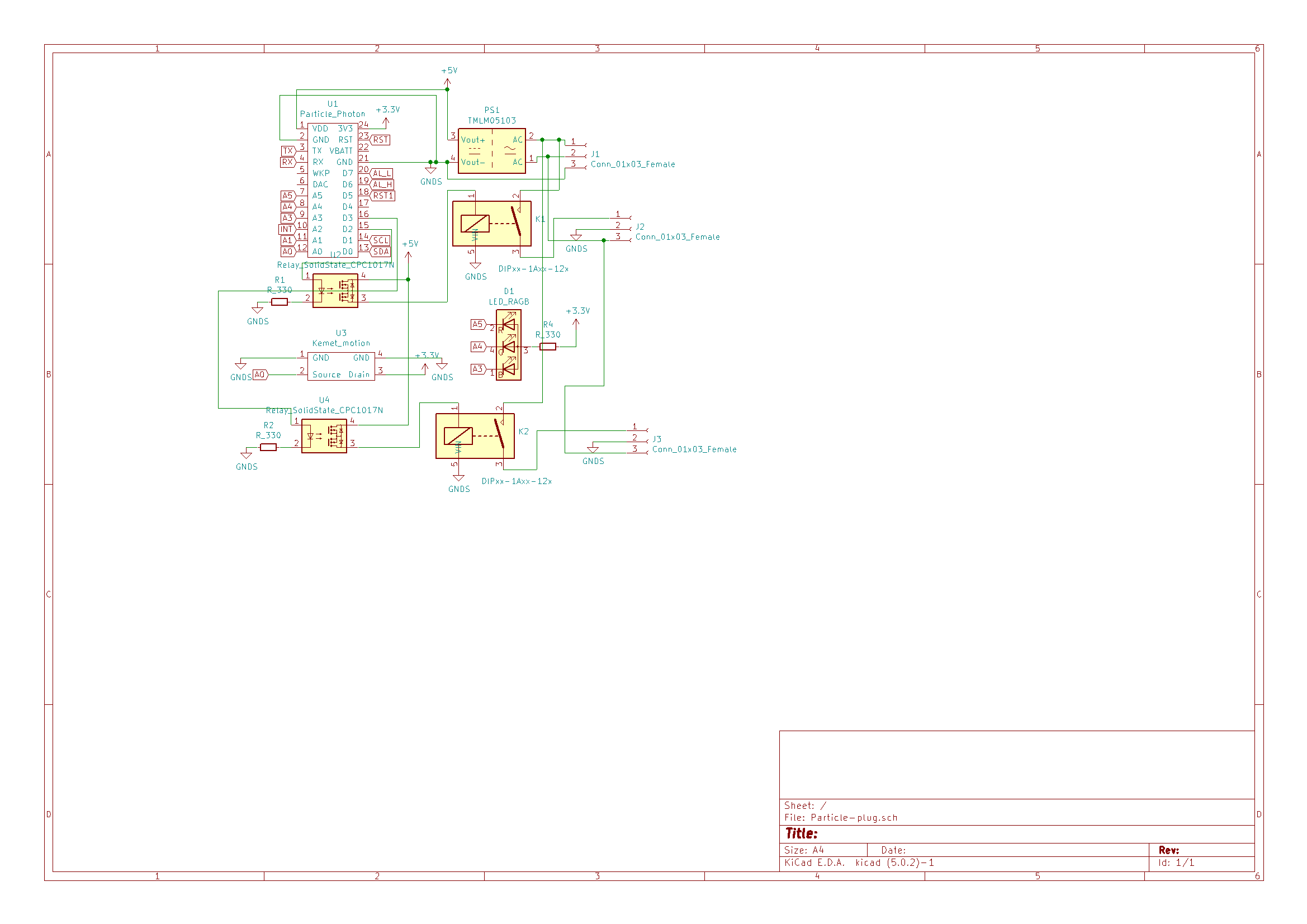I have been wanting to build this project for a long time as soon as I found this awesome Plug module. all I needed was a way to Convert the 120 Volt power to 5VDC 5 amps and lots of room for sensors and control relays. Below is the Project build for entry in the Kemet IR Sensor contest. I will be ordering the PCB's from PCBway.com out of china as they have excellent product and a really quick 7 day turn around from ordering to delivery.
https://www.polycase.com/gs-2415
The PCB was designed on KiCad which is a free on line downloadable program for educational use. I will explain the design in the following images.
As you can see I used a Keep away option on part of the trace to keep the 120 volts traces away from all other copper traces by at least 5 mm this ensures safety of the board preventing any accidental cross over of 120 to 5 VDC
This image is of the RGB LED and the KEMET Human Motion sensor on the upper right hand side of the board.I will install a small Clear plastic viewing window for the LED for viewing status of the controller.
The Board has 2 10 Amp relays controlled from 2 Solid state relays. You can also use Transistors or Mosfets if you so desire. But I like the current capabilities of the SSR's.
The larger holes are for wire solder points. I recommend using at least #14 wire to connect to the output Points for the Plug-in Attachment module to prevent heating a burning of the wire. It is recommended not to control any high amperage devices such as Coffee makers or Microwaves as it could burn out the relays or the traces. I am going for a heavier trace in the PCB build which will increase cost but will enable a 10 amp feed to the relays for safety.
For the controller I will be using a Particle Photon. It is a WiFi enabled controller programmable from a WEB IDE which makes changes on the fly effortless and easy.
https://store.particle.io/products/photon
The Sensor- Kemet IR Sensor
Sensor Motion, Pyroelectric, PIR (Passive Infrared) 4-SMD Module
I chose the Bare Module based on Price as it is a $9.00 unit as compared to a $20.00 unit on a PCB.
https://www.digikey.com/product-detail/en/PL-N823-01/399-17913-1-ND/8655958
All these modules are based on the proximity sensor chip PL-N823-01 (DKE p/n 399-17913-1-ND) which is Pyroelectric Infrared Sensor (aka PIR - Passive Infrared or IR motion sensors) and exists in the market for some time already. The sensor is based on Tokin (a vendor acquired by KEMET in 2017) patent technology that does not require the lens for operation up to 2m and can sense up to 20cm with resin or glass without a hole for a sensor. Using the lens as an option will increase the sensing distance up to 5 meters.
The sensor chip PL-N823-01 outputs analog voltage that should be amplified and connected to a MCU’s A/D for filtering and processing and fits the high volume or price sensitive applications and involves some design activity from the customer side.
The sensor modules mentioned above, have all the necessary circuitry built-in in the module, they are still rather small – about a dime size (Figure 1). The exact dimensions are shown in a module data sheet on https://content.kemet.com/datasheets/KEM_SE0208_SS.pdf
Mesh Switch Using Kemet IR Sensor Module without Board
This Board is designed to work with any single gang Switch box (US and Americas). Motion Activated with the Kemet Motion Sensor and Light sensitive will prevent Power Usage in the Daytime and activate only when motion is activated or turned on with Reset Button.
Particle Mesh Device
Mesh Xenon
https://docs.particle.io/datasheets/mesh/xenon-datasheet/
The Xenon is mesh only and designed to function as the endpoint of your IoT network. It is based on the Nordic nRF52840 and has built-in battery charging circuitry so it’s easy to connect a Li-Po and deploy your local network in minutes.
The Xenon is best for connecting sensors, motors, pumps, valves, and points of data-interest. Pair it with an Argon or Boron gateway to get all that great data into the Device Cloud.
The Build
The following are images of the soldering and installation of all the parts to make this project work.
The Program
I followed the instructions from this post https://www.digikey.com/en/maker/projects/things-to-consider-when-designing-with-the-kemet-ss-430-sensor-module/b4abe77a5ec247adaa147a165ddfcb3f in able to read the Sensor and translate its output for the Particle.
Completed Unit and Testing







_4YUDWziWQ8.png?auto=compress%2Cformat&w=48&h=48&fit=fill&bg=ffffff)





Comments
Please log in or sign up to comment.